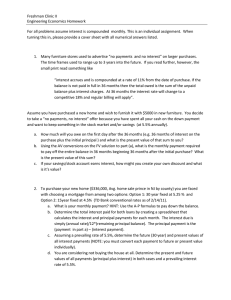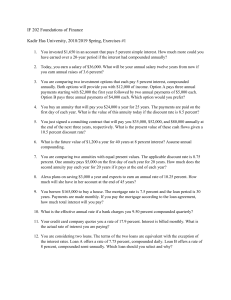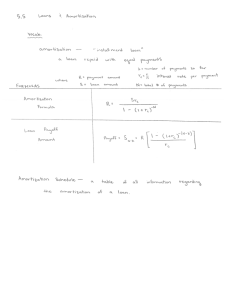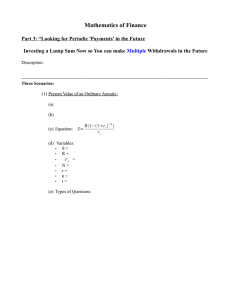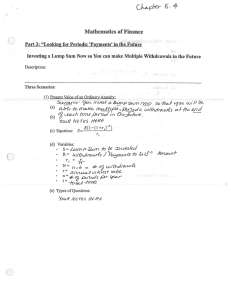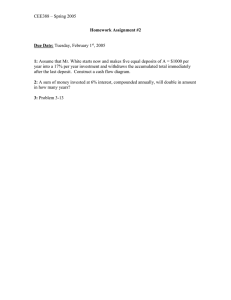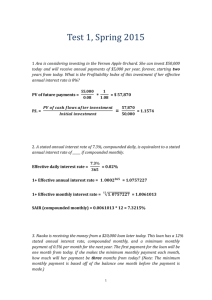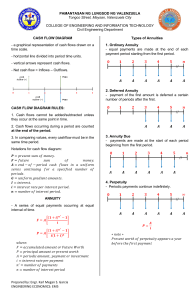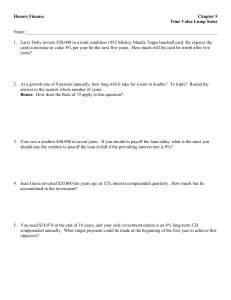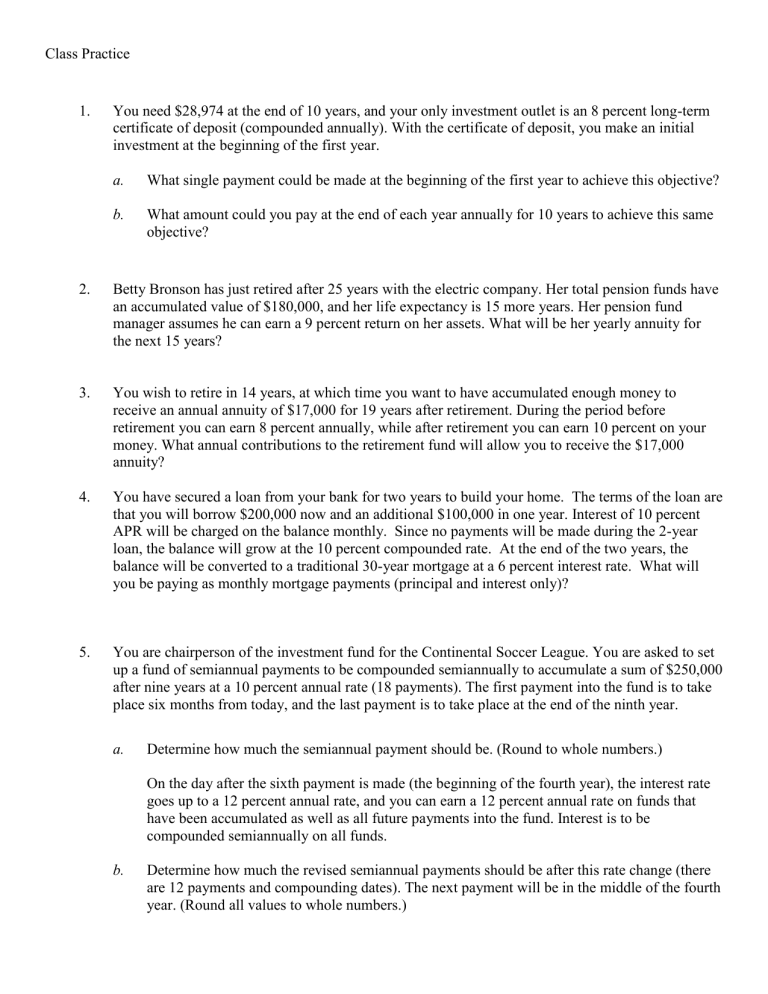
Class Practice 1. You need $28,974 at the end of 10 years, and your only investment outlet is an 8 percent long-term certificate of deposit (compounded annually). With the certificate of deposit, you make an initial investment at the beginning of the first year. a. What single payment could be made at the beginning of the first year to achieve this objective? b. What amount could you pay at the end of each year annually for 10 years to achieve this same objective? 2. Betty Bronson has just retired after 25 years with the electric company. Her total pension funds have an accumulated value of $180,000, and her life expectancy is 15 more years. Her pension fund manager assumes he can earn a 9 percent return on her assets. What will be her yearly annuity for the next 15 years? 3. You wish to retire in 14 years, at which time you want to have accumulated enough money to receive an annual annuity of $17,000 for 19 years after retirement. During the period before retirement you can earn 8 percent annually, while after retirement you can earn 10 percent on your money. What annual contributions to the retirement fund will allow you to receive the $17,000 annuity? 4. You have secured a loan from your bank for two years to build your home. The terms of the loan are that you will borrow $200,000 now and an additional $100,000 in one year. Interest of 10 percent APR will be charged on the balance monthly. Since no payments will be made during the 2-year loan, the balance will grow at the 10 percent compounded rate. At the end of the two years, the balance will be converted to a traditional 30-year mortgage at a 6 percent interest rate. What will you be paying as monthly mortgage payments (principal and interest only)? 5. You are chairperson of the investment fund for the Continental Soccer League. You are asked to set up a fund of semiannual payments to be compounded semiannually to accumulate a sum of $250,000 after nine years at a 10 percent annual rate (18 payments). The first payment into the fund is to take place six months from today, and the last payment is to take place at the end of the ninth year. a. Determine how much the semiannual payment should be. (Round to whole numbers.) On the day after the sixth payment is made (the beginning of the fourth year), the interest rate goes up to a 12 percent annual rate, and you can earn a 12 percent annual rate on funds that have been accumulated as well as all future payments into the fund. Interest is to be compounded semiannually on all funds. b. Determine how much the revised semiannual payments should be after this rate change (there are 12 payments and compounding dates). The next payment will be in the middle of the fourth year. (Round all values to whole numbers.)
